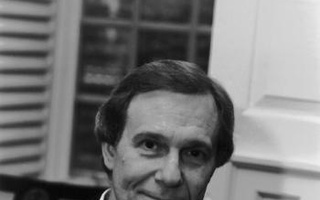“You have a lot of guidance based on past history of giving, what you’re able [to raise] in the so-called quiet phase of the campaign, while you’re collecting commitments and gifts but not yet declaring a goal,” said Harvey V. Fineberg ’67, who was University provost and one of the most prominent fundraisers during Harvard’s last capital campaign. “That gives you a sense whether a given goal is a proper stretch but not so outrageous to be unlikely to be met.”
MORE DIVERSE DONORS
As it looks to raise more money than ever before, Harvard must appeal to a different kind of donor.
The University has traditionally turned to a homogeneous alumni base when raising money. These past fundraising efforts drew from “fewer international students, fewer people of color, fewer women, for that matter, who were in the alumni ranks,” according to Tamara E. Rogers ’74, vice president for alumni affairs and development.
But since then, the demographics of the Harvard student body have shifted dramatically, as financial aid programs have expanded, minority recruiting has been introduced, and the international student population has grown—in turn resulting in a more diverse alumni base.
Rogers said that this altered pool of donors requires more complex networking on behalf of her development office, as alumni live in more diverse locations and navigate in a wider variety of social circles.
“You just have to be much broader in your outreach and more thoughtful,” Rogers said. “It’s not the case that everyone is concentrated in one or two areas, or the case that everyone knew each other, so to speak, in college.”
This new heterogeneity can also create new opportunities for schools like Harvard, opening the door to a wealth of untapped pockets of patrons.
“As institutions have grown their base of international students, that base can then translate into potential donors from all over the world,” Goldsmith said.
Rob Scott, campaign director at MIT’s Office of Campaign Planning, said that globalization has been a boon for university fundraising. MIT wrapped up a $2 billion campaign in 2004, and is in the beginning stages of another major fundraising drive.
“The fact that we live in a world that is increasingly seen as deeply connected throughout networks and that things that happen on different continents have an impact on each other helps with talking with international alumni,” Scott said.”
A MORE COMPETITIVE FIELD
In courting this increasingly diverse pool of alumni, Harvard must employ new messaging strategies to win over donors whose attention—and checkbooks—are pulled in multiple directions.
Scott said that universities must compete with a wider array of charitable causes.
“For a long time, higher education institutions were the only organizations that attracted such philanthropic support,” Scott said. “Now there’s just such a rich variety of ways for people to get involved.”
Read more in University News
Carr Center Speakers Express Disapproval of Israeli-Palestinian Water DistributionRecommended Articles
-
Seven-Hundred Dollars Down...When an organization can’t raise any money, it renames the campaign and hopes for a miracle. At least, that seems
-
Professor Bell's BiddingIt is our belief and experience that a diverse faculty increases the quality of teaching. Inevitably, a class in literature, history, or anthropology would be informed, in part, by the perspective and identity of the professor.
-
Girls in the ClassroomWhen female students are called on, we often fail to articulate our ideas and arguments as confidently as male students do.
-
Swim Across America Raises $55kSwimmers from across the Boston area competed on Saturday to raise money for cancer research, at a Swim Across America fundraising event at Blodgett Pool.
-
 Q & A with Neil L. Rudenstine
Q & A with Neil L. Rudenstine -
 Lessig’s PAC Raises Millions, Despite Low Support from Harvard
Lessig’s PAC Raises Millions, Despite Low Support from Harvard













